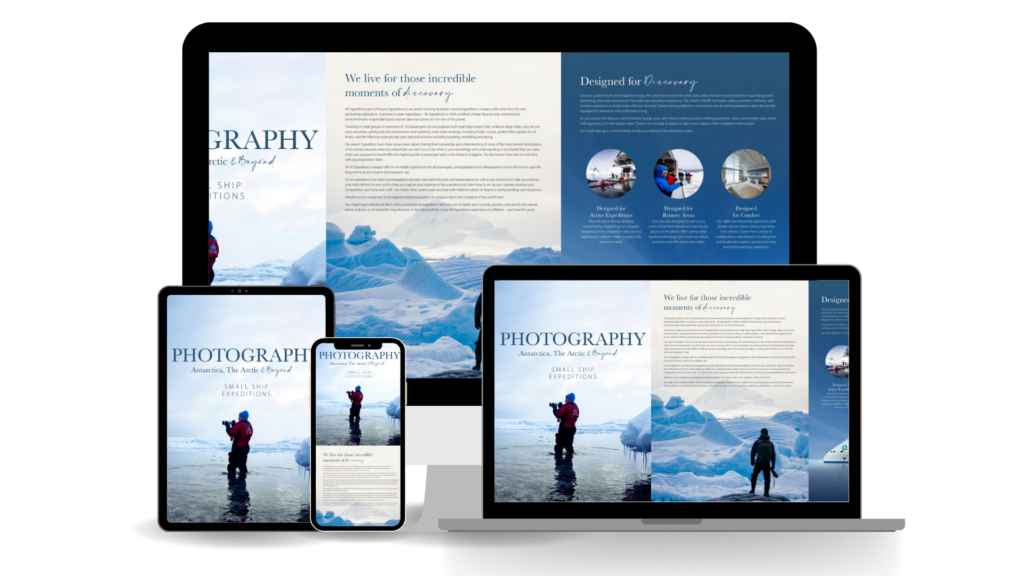Animal lovers get a kick out of our expeditions to the Antarctic Peninsula and South Georgia because of the many different species of wildlife we see. Penguins huddle together on shore, whales and seals surface between the ice and seabirds float on the wind above, looking for prey.
When you book an Antarctic expedition, half the fun is capturing what you see and experience on camera! But when animals move so quickly, and seemingly appear unexpectedly, how do you get the best pictures?
Bring the right gear
It would be wise for you to bring a DSLR camera with a quality variable zoom lens (not a prime) if you want the most flexibility. We recommend around 80-400 mm, so you can have the best of both wide and close-up images.
A tripod will help you steady the shot, but they are hard to carry, especially in Zodiacs. For this reason, consider instead bringing a lightweight monopod, ensuring it has a spring-trigger release rather than clamps. That way you can place it down, adjust the height and take your shot in seconds.
Any number of variables can ruin a photograph, which means you need to set your DSLR up with the right settings:
- For exposure: A camera’s ‘ISO’ setting adjusts its sensitivity to light. Set this to automatic if you don’t want to fiddle with it later on.
- For blur: ‘Shutter speed’ will affect the motion blur of a moving animal, so the faster (higher) the number, the less you’ll be affected by blur. Turn on your lens’s in-built stabiliser and set it to around ‘1/125’ or so.
- For focus: The ‘f’ numbers on your camera are its aperture size (e.g. f/5.6), which affects how focus works. The lower the number, the wider the aperture, which means more light is let in. This also makes focusing harder, but conversely, you can get deeper shots (with something soft in the foreground, and your subject clear behind it). Alternatively, higher numbers reduce light but make focusing easier. You’ll need to play with this to get what’s right for each image.
Final Tips
We could recommend tips on shot composition, but ultimately, it’s all going to come down to the individual situation.
Remember, you aren’t restricted to just standing still and taking a picture from eye height. Try crouching down to an animal’s level and seeing how different angles affect the emotions of your work.
Remember though, as you explore Antarctica on foot, you aren’t allowed to get within 5 metres of the wildlife. This is why you brought a zoom lens — so you can still get those close-ups! If you need a few tips to help you get the best shots, consider our photography expeditions, led by our expert team of photographers.
On this adventure, you’ll learn all about shot composition, in addition to many other aspects of achieving the best wildlife pictures. Our guides will also teach you about processing images using special software programs, making it an all-encompassing and highly informative trip.
For more information contact our friendly team of Antarctica experts.





